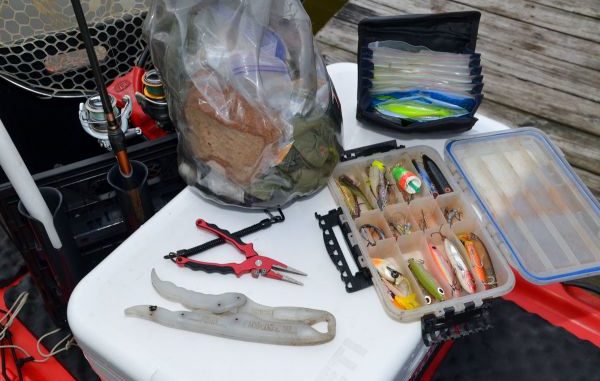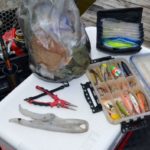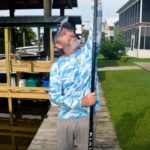
Rigging to fish from a paddle board involves some special gear — some conventional kayaking gear and some things that any fisherman would have.
A major item of difference from what is used with kayaks is the paddle.
An adjustable-length stand-up paddle with only one blade is used. For effective use, the length should be adjusted to extend to wrist height of the paddler when standing up with his arm raised.
Contrary to intuition, the paddle is used with the scoop side of the blade toward the front.
A paddle clip belt is a very useful accessory. Essentially a taco clip that can be put on any wide belt, it allows the angler to quickly clip the paddle and grab a rod when he sights a fish.
The loss of the paddle would leave a paddle boarder in the embarrassing situation of being up the proverbial creek.
An anchor also is important. Simply a 3- to 4-foot length of PVC pipe with a rubber grip on one end, it is staubed in the mud while fighting a strong fish like a redfish that will tow the paddle board all over.
A rope tied through a hole drilled through the pipe just below the grip is used to secure the anchor to the board.
A kayak fishing crate, essentially a plastic milk crate with rod holders mounted on it, is standard gear for paddle boarders, as it is for kayak fishermen.
One of the rod holders is used to store the anchor when it isn’t in use. John Williams recommends a landing net, a fish gripper and a set of pliers to handle fish be stored either in or attached to the crate.
The crate also holds all the other gear that a paddle board fisherman will use. A waterproof bag, preferably clear so the angler can see what he is grabbing, is used to store rain gear, sunscreen, bug spray, fishing license and lunch.
Fishing tackle is also stored in the crate in small boxes and pouches. Williams is especially partial to Plano-brand boxes because of their waterproof rings.
On the subject of being waterproof, having a waterproof case for one’s cell phone is important. Even a waterproof phone will sink if dropped overboard, so inserting the phone in a LifeProof life jacket float before the trip can save a fisherman from a lot of grief.
Having the right clothing will also make a paddle-board trip more enjoyable, Williams noted. Fast-drying synthetic pants and shirts are good choices. Shirts should have a high UPF rating to protect the wearer from the sun and should wick moisture from the body well; paddling causes sweating.
Williams is partial to zip-off pants that can be converted to shorts. Above all, the pants should be loose to allow the angler to bend comfortably to land fish.
“Everything about jeans is wrong,” he quipped with a grin.
Shoes should have good no-skid soles — not big clunky shoes with thick soles. Head wears Vibram FiveFinger shoes that offer stable, non-slip footing.
Williams considers polarized sunglasses to be essential for sight fishing. His preference is for brown-based lens rather than gray-based ones, because the former are better early and late and offer more contrast. Because there are few places to lay sunglasses on a paddle board, he recommended sunglasses always have a retainer strap.
Finally, wear a hat; any hat that suits the angler is fine. It offers sun protection and makes sight fishing easier by shading the angler’s eyes.


